Earlier this month, the Active Cities team reunited in the northern French city of Lille for its fourth partner meeting and the official kickoff of an implementation-packed 2024. The partnership gathered at the Sustainable Mobility House, a recently opened mobility awareness-spreading centre centrally located between the train stations of Lille-Flandres & Lille-Europe.
Authors: Juliette Ténart, Dennis Martínez, Harry Dobbs
Kickstarting an action-packed year
For two days, Active Cities partners delved deep into their pilot implementation plans through a series of sessions that helped our 8 North Sea cities get more concrete and ever closer to implementation:
- Leeuwarden, Lund, Groningen and Hamburg-Eimsbüttel presented their plans to pilot street reconfigurations that transform the spaces into a diversity of uses, from vital pedestrian summer streets to healthy boulevards.
- Lille, Bergen, Mechelen and Aarhus showcased their plans to test new forms of mobility hubs that increase the access and connection to active mobility, from bicycle repair hubs to safe parking nodes along a metropolitan cycling corridor.
The project does not rely solely on spatial changes however. KU Leuven’s team led another successful session on behaviour change strategies, helping partners pinpoint the social identities and behaviours of the citizens they are aiming to change.
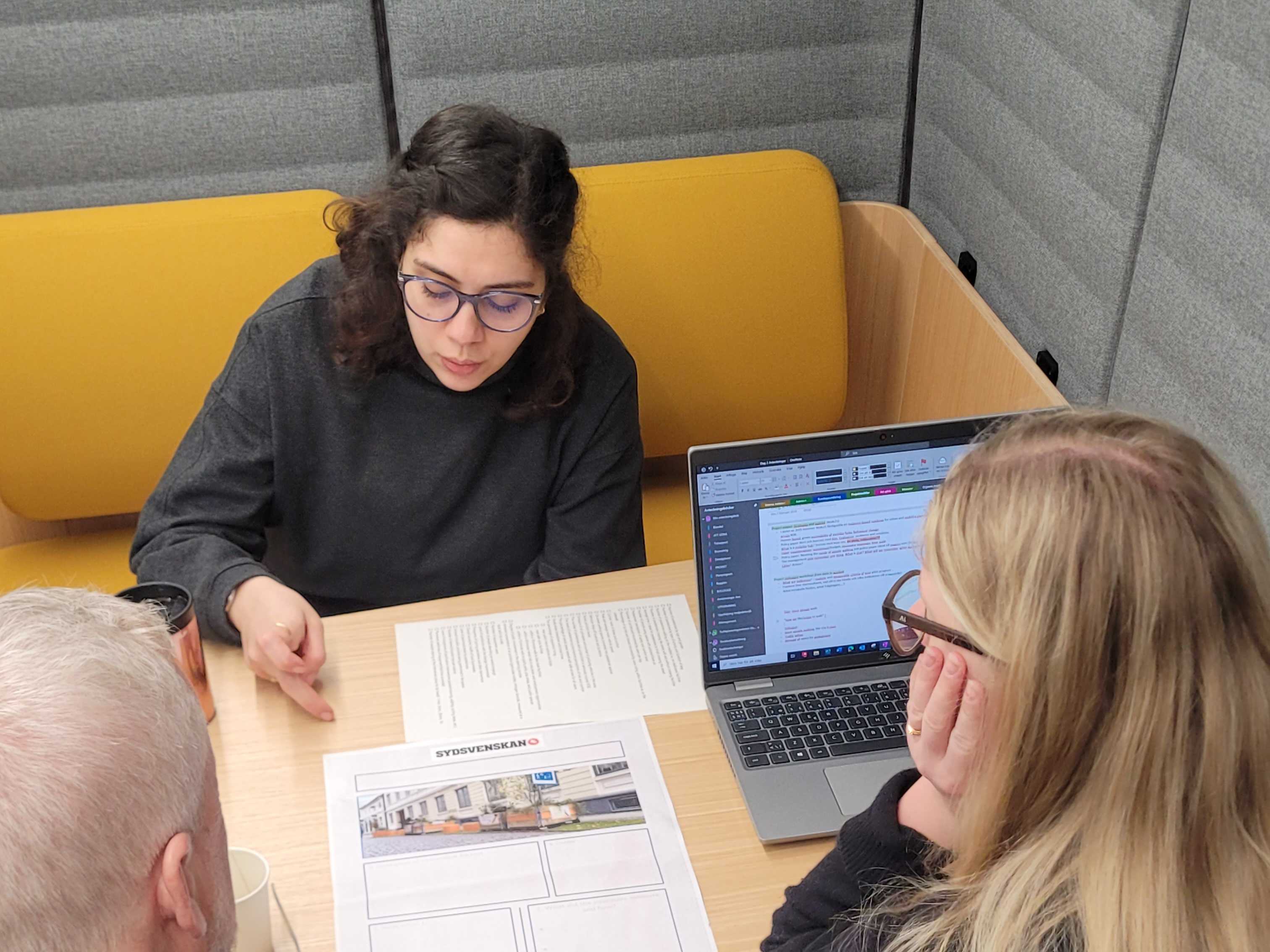
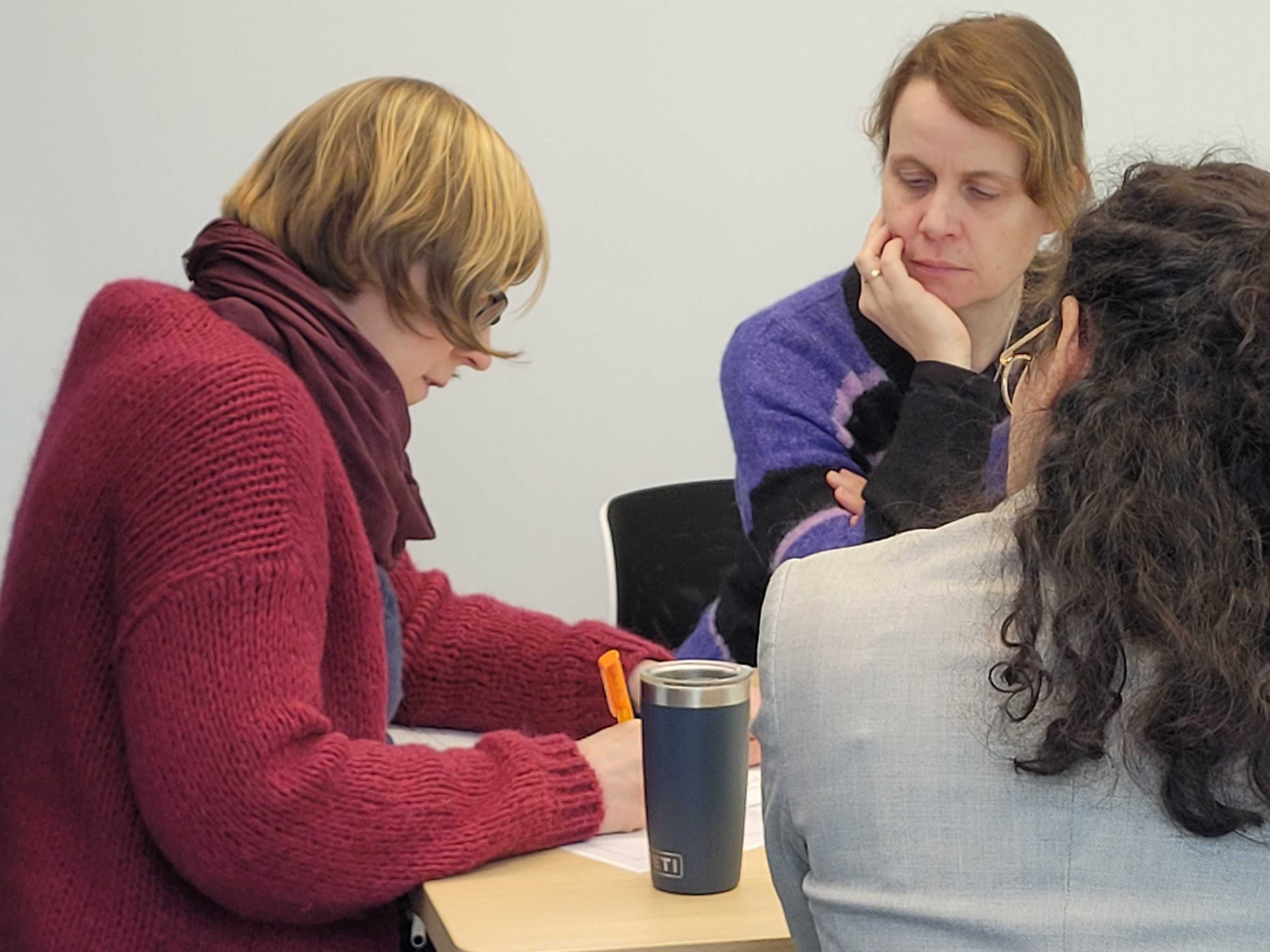
Getting to know Lille's Sustainable Mobility House
Open since September 2023, the MMD (short for “Maison des Mobilités Durables” in French) is one of the latest replications of the broader successful French concept with the same name. In a nutshell, this physical centre aims to bring awareness and help citizens get closer to sustainable mobility alternatives to the private car.
Located between Lille’s two central stations, Lille’s MMD presents itself as a helpdesk office for all matters related to sustainable mobility. Providing further details,, Myriam Bossard, head of Lille’s MMD, demonstrated the centre’s hard work as an education and citizen engagement mobility hub: second bike markets, cycling lessons, awareness campaigns, speaker events are just some of the activities they run on a regular basis to foster the use of active mobility.
It was a pleasure for Lille to host the Active Cities partners and showcase the Maison des Mobilités Durables (Sustainable Mobility House) to seven other municipalities, whilst sharing in ideas to bolster active mobility across the North Sea region
As part of Active Cities, the city of Lille aims to demonstrate the crucial role that the MMD plays in shifting mobility patterns through education, awareness and behaviour change.
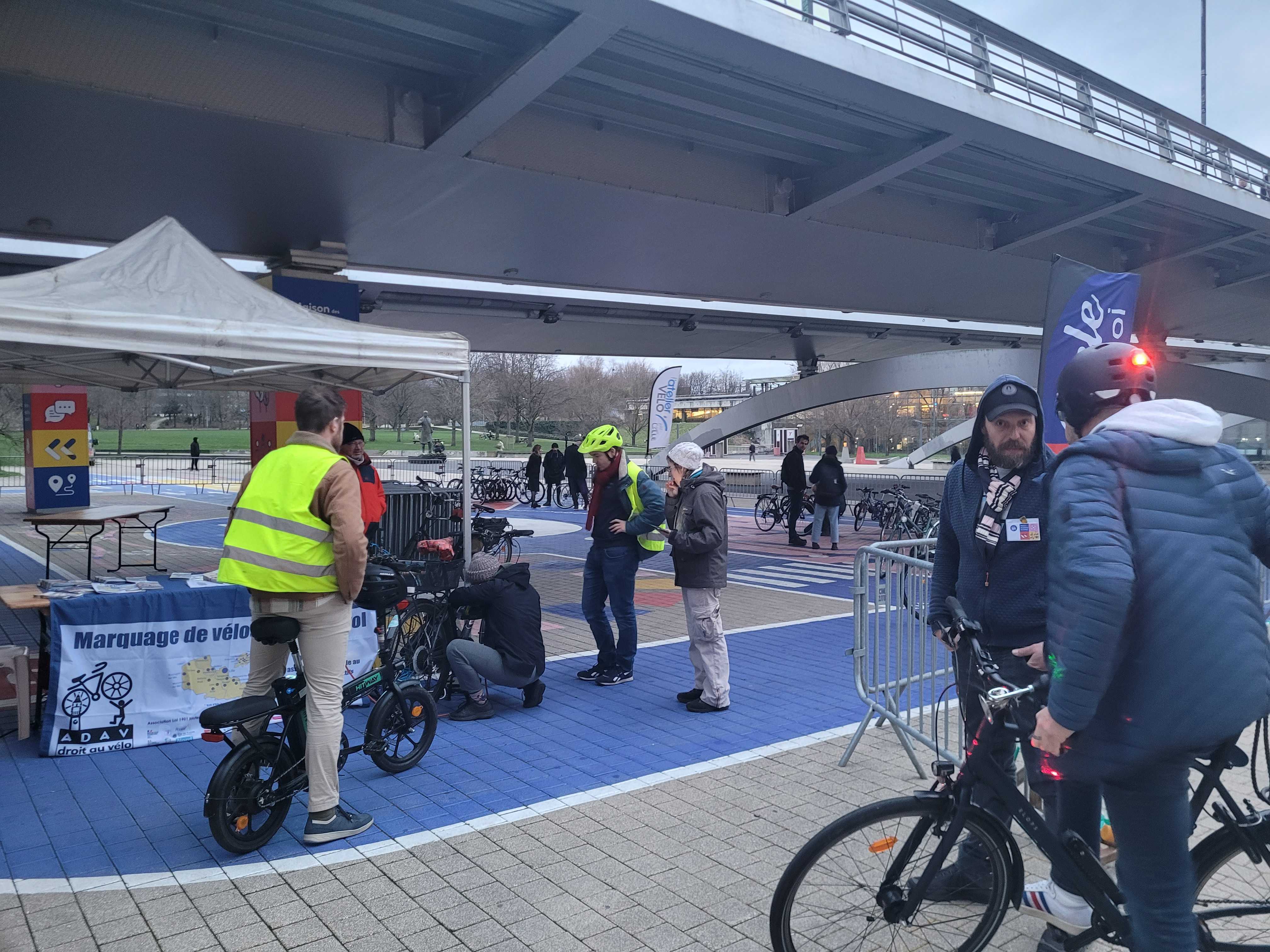

A walkable ville de Lille, a challenge for the Métropole
Beyond our internal progress, the team was able to experience Lille’s cyclability and walkability during a guided tour of the city. The city of Lille is the historical and geographical heart of the wider ~1 million inhabitant metropolitan area; as many European cities experienced during the second half of the 20th century, Lille underwent many changes to accommodate car traffic to and through its historic city centre.
Since the 90s, however, the city has taken steps to reverse this trend and bring people back to the centre of the city’s spaces. Lille has been fully reopening its streets to pedestrians and cyclists, with a strong combination of uses such as green corridors, shopping boulevards and restaurant streets.
In the afternoon of the second day, the MMD organised “Lille à Pied”, an open talk to members of the public, local students and stakeholders to get deeper insights into the walkability of Lille. During his keynote, Jim Walker (director of Walk21) summarised:
Lille has an impressive 58% of short trips being walked and another 3% cycled - a real active travel foundation. Over the last 25 years the city has taken big strides to improve walkability in lots of places - people now belong in the city and it's the car that's the guest.
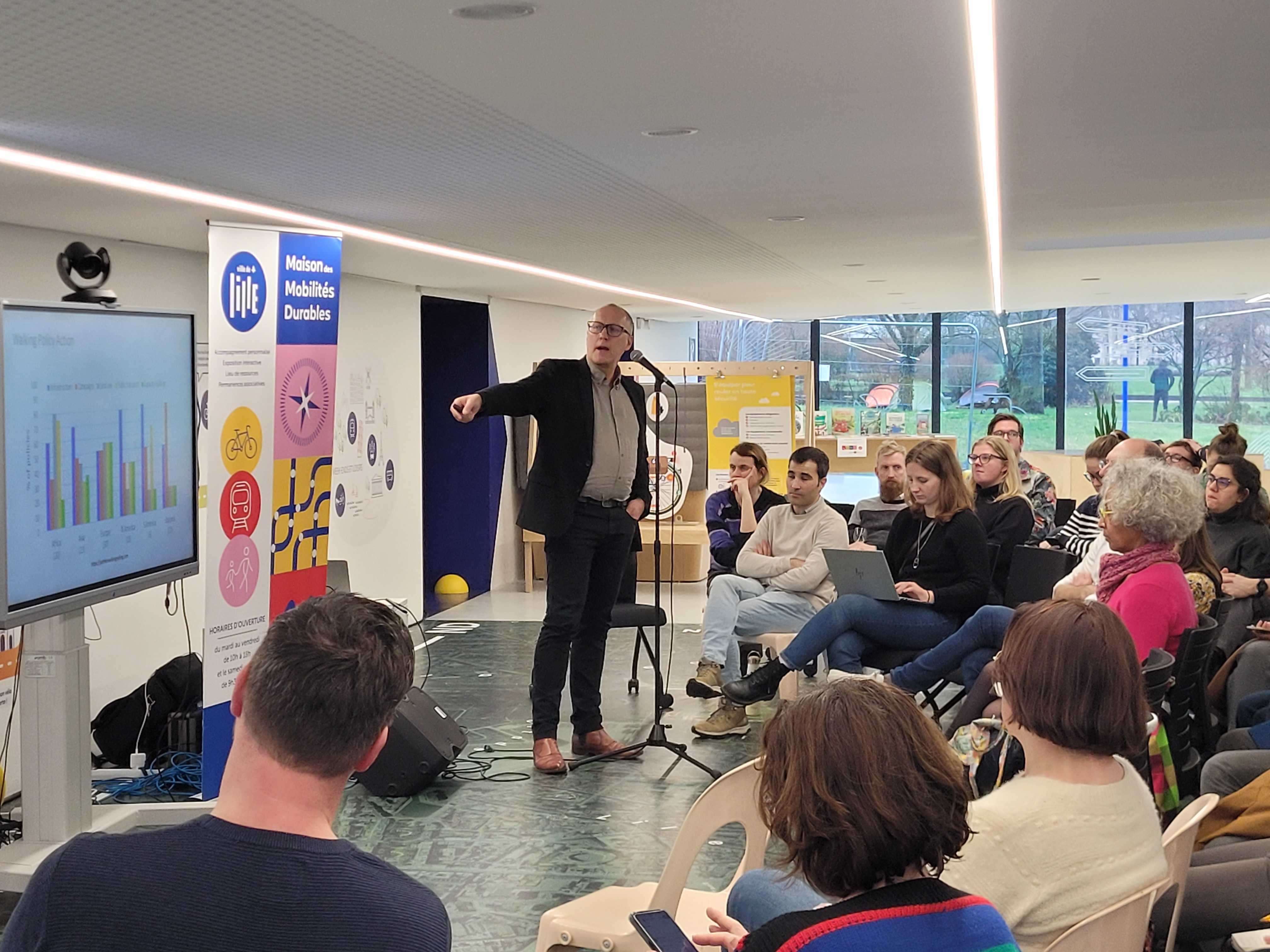
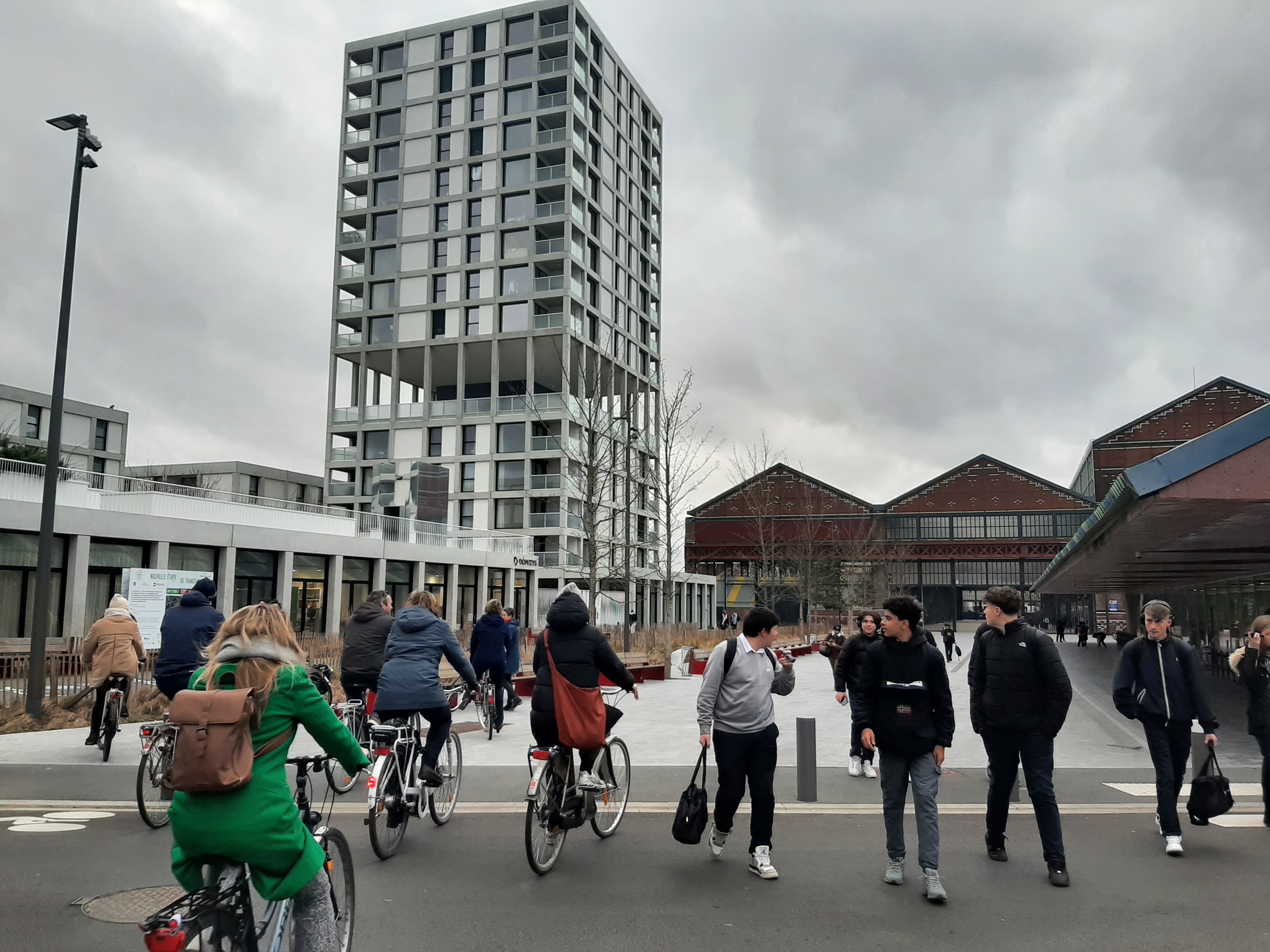
However, the city still faces many active mobility challenges. While the city centre has welcomed and adopted active mobility at the core of its urban planning, the wider metropolitan area is lagging behind. The MMD strives to tackle this issue and bring the model of the central city to the other 95 municipalities that comprise the French metropolis.
What’s next for the partnership?
After two intense days of workshops, presentations, and open discussions, the team funnelled all the work ahead into a concrete action plan for 2024: our North Sea cities will finalise and calculate a baseline together with KU Leuven and Aalborg University, they will engage citizens to choose in a dialogue what the physical interventions should include, and will implement these changes via temporary pilots to implement the desired changes.
Our next transnational checkpoint will not happen until October in Aarhus, Denmark. Until then, the team will be hard at work at home and will check in regularly online to communicate progress and share knowledge. Stay tuned for more updates!
